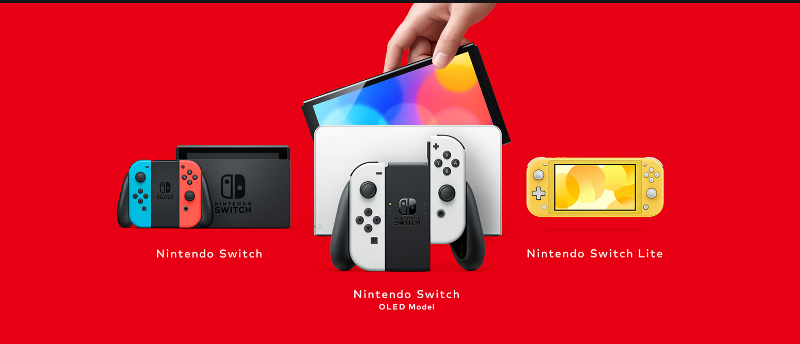Four years after it was first released, the Nintendo Switch is one of a kind full-featured home gaming console, similar to the Nintendo Wii U, that can be utilized as a portable device, similar to the Nintendo 3DS. Nintendo is experimenting with some pretty fascinating concepts with this gadget, with its six-inch tablet shape and removable, wireless controllers.
The Switch features a solid library of first-party titles, ports of classic games, and a surprisingly large number of outstanding indies, the majority of which can be played on a TV at home or in your hands anyplace else. Innovative games like the Labo series prove that Nintendo's ingenuity and the system's flexibility have no bounds. Although its internet service might need some improvement, we have no reservations in recommending the Switch as an Editors' Choice. The Switch Lite is a great, portable-only version of the system if you like the game choices and want to play handheld but don't require TV connectivity.

Nintendo Switch Specifications & Design
The Switch is the smallest and lightest primary console of this generation, measuring 4 x 9.4 x 0.55 inches (10.1 x 23.8 x 1.3 cm) and weighing 0.88 pounds (approximately 400 grams) with the Joy-Cons attached. The built-in display is a 720p LCD screen that can also be used as a touch screen, and it is powered by an Nvidia proprietary Tegra CPU.
While the Nintendo Switch and Switch Lite feature internal hardware that is identical, the Switch OLED will receive a more complete makeover.
The Switch OLED RAM is double that of the current console, at 8GB, while the onboard storage will be increased to 128GB. The current Switch Lite has 32GB of storage and almost forces you to buy a microSD card if you want to keep more than one game, whereas the Nintendo Switch has 64GB.
Both Joy-Con controllers are powered by rechargeable batteries with 20-hour battery life and a 3.5-hour charging time. The Joy-Cons may be charged by connecting them into the side rails of the main Switch console or into a variety of specifically designed ports, the majority of which are available separately. (A single Joy-Con holder is included with the system, which mimics the appearance and feel of a conventional controller.)
In 2021, a firmware update enabled Bluetooth audio compatibility, allowing you to utilize Bluetooth headphones with the system. This is a great feature because it gives the system in docked mode a headphone choice.
Nintendo Switch Pricing
The OLED is £40-£50 more costly than the standard Switch, but with the original Nintendo Switch beginning at £259 and the Nintendo Switch Lite dropping to £199, it's not that much more expensive.
Conclusion
The Nintendo Switch launched in 2017 with a bang and has only gotten better since then. Non-Nintendo developers are clamouring to get their games on the platform, and Nintendo has responded to many of the criticisms of the original console with the Switch Lite, a new, more affordable form factor in the refreshed 2019 model, and, most recently, an OLED version with a larger, brighter screen.
